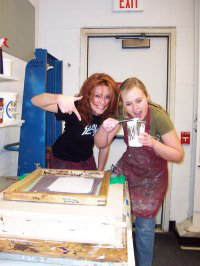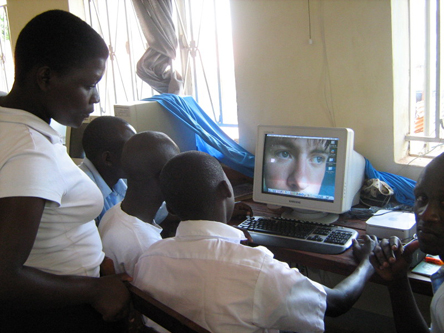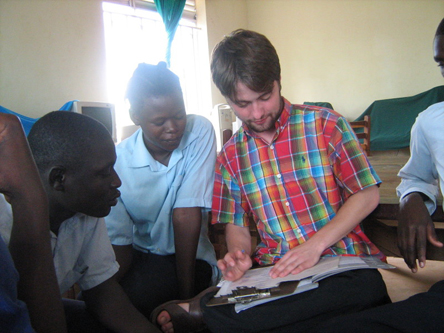Fred Quillin
The most wonderful aspect about the medium of Printmaking is that, unlike most other fine art mediums, it’s a community act, for the most part. Painters own their own brushes and paint. Sculptors own their own clay. Digital artists own their own computer workstations. But generally speaking, most printmakers do not own their own printing press. Often the resources provided by a printmaking studio, especially in the university setting, cannot be easily owned by artists, and thus the artists typically work in the same studio as one another- from the start of the process to the finish- a factor unique from any other medium of artmaking. I’ve experienced this the most at my university, of course, since that’s where I’ve done all my printmaking work thusfar.
There are only a few classes of printmaking offered every semester, but since the work is very time consuming, and most of it must be done in the actual printmaking studio, you see the same faces working on projects all around you, all the time. This allows, almost forces you to develop relationships of some kind with the other people in the studio, making you more comfortable with the other artists. This comfort level allows critiques to be more honest and energized, opening up a whole new layer of comfort, which is only built upon during the next sessions of studio work, hopefully producing relationships with your peers the level of which you’d never get in any other setting.

This comfort level, this community-based communication and interaction does not occur in a computer lab with isolated workstations, because typically, everyone has their own computer and is able to shut themselves off from everyone else. Typically.
The computer lab at the Foundation for Development of Needy Communities here in Mbale, Uganda is not a typical computer lab, because to these students, acquiring a new Mac Mini of their own is about as possible as you acquiring a several thousand dollar, one-ton, room-sized printing press of your own. Thus, students take turns at the mouse during demonstrations and they rotate when doing their own work.

I didn’t choose the picture: the students wanted it!
The computer lab doesn’t merely have one computer, though; it also has 17 PCs ranging from 1994-98: only five of which actually function. Before I arrived, the so-called “Biggest computer in Mbale,” the MacMini, was completely unused by everyone, except to play music in iTunes. No one could figure out how to navigate through the operational system. The 16 students were taught secretorial programs such as Microsoft Word, Excel, and Powerpoint huddled around each computer in groups of three or four. Now they huddle around the one computer in a group of 16, plus myself and the other instructor.
While this seems like a complete inconvenience, its not; it allows for a very detailed and in-depth question and answer by the entire class, all at once. While it’s hard to see
small icons on the screen from five or six feet away, I speak slowly and articulate enough so that they understand me clearly. I also draw the icons on a notepad so they all know exactly what is being talked about. I stress that they ask me anything, especially if they don’t understand me, and I ask their patience in the same with me. One student asks a question that another student may have been too shy to ask themselves, which leads to a whole new demo on something I could have never foretold in some lesson plan. With the *very* limited knowledge I had prior to arrival, any kind of lesson plan I could have concocted would have bombed immediately. The entire experience has been based on a teach on a need-to-know basis referenced to class questions.

Students learn about the Principles of Design during one of the frequent power outages
But the interesting thing is the community! These students are experiencing the same kind of intimacy as printmakers in the States for the same reason. And the results are the same- the critiques we’ve had have at times been infused with SO much energy: students literally jumping out of their seats anxious to talk, all sounds inaudible due to so many raised voices. But never in spite and always with fun and good nature. The students are already showing more of a bond with one another than when I arrived.
In Uganda, children care for children and groups of families are raised in the same villages for generations. The nation itself is reliant on the aid of other nations. Such community values on the personal scale as viewed in my classroom are rare in the States, but not surprising here in a country based on such community need and interaction.
Fred Quillin, Designers Without Borders‘ first student volunteer, is reporting from Africa until August 8th.











Leave a Reply
You must be logged in to post a comment.